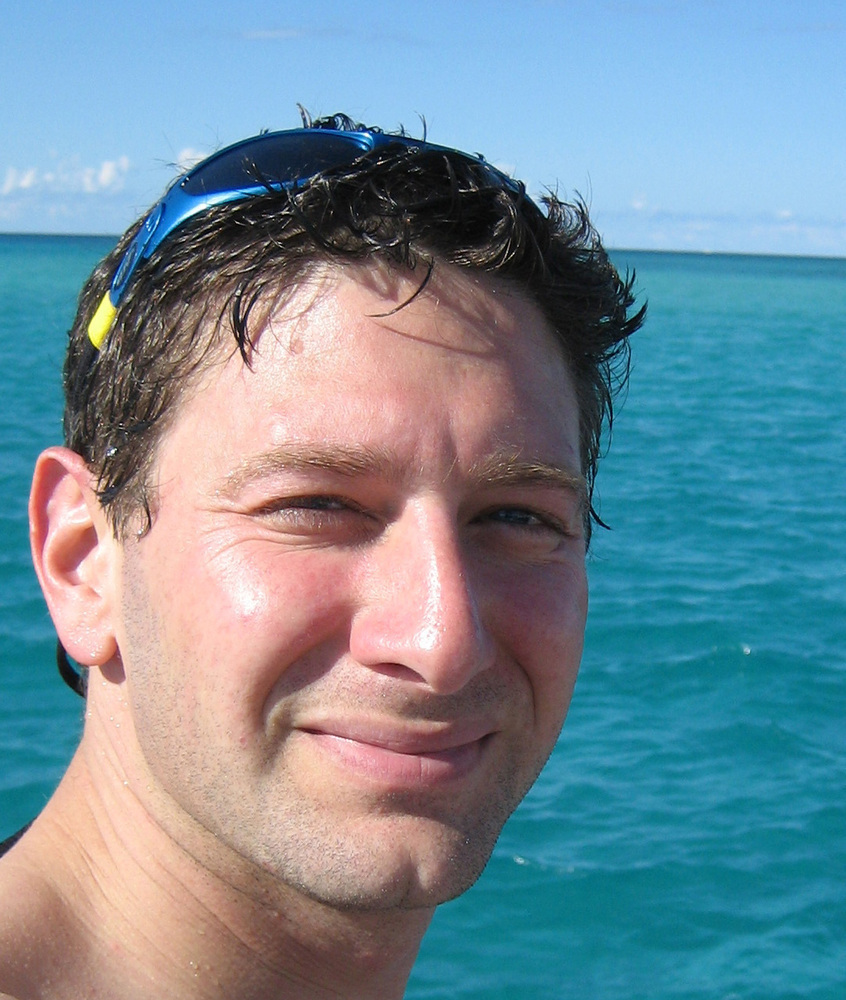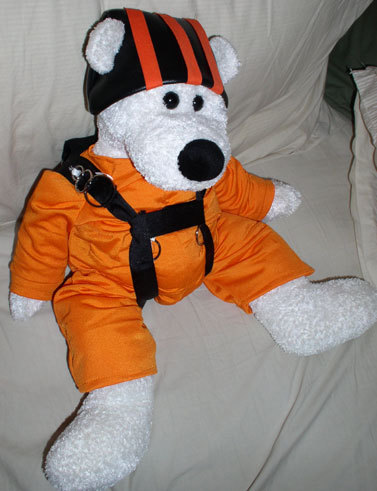Recommended Posts
craig_b 0
QuoteDo you alter it each time for the wind line, or just keep it constant, like the grass strip typical at a place like Perris?
Excellent point for wind and our experience with cross wind landings!
On the another point, all one has to do to understand the real point behind this entire thread is to watch a Big Way come in for landing at Perris. We better learn excellent accuracy and heads up landings.
_________________________________________
once you've experienced flight, you forever walk the ground with your head pointed skyward. There you've been and there you long to return.
tdog 0
QuoteGary:
2-way communication with you having a voice operated transmission? Or just the instructor talking to you?
One way normally because you are doing what they say with both hands, but you can talk back as needed.
Quote
I suppose it is much more efficient learning paraglider flight because many flights can be made in a short period of time, and with the I close by.
No way... Try hiking up a 1000' hill (45 minute hike) with 70 pounds on your back in the hot summer day. And, you cannot fly in the peak of the day because the air is too rough... Three flights from the training hill was my max in any one day, and I went home very tired. I normally did two.
QuoteStill, perhaps it tells us that we should have radios on our "students" for more jumps and for a much different reason than for when they had only a few jumps
Perhaps you are right. I read of a team of freefall coaches that were using special noise cancelling microphones to be able to communicate to students in freefall. "More arch, kick your legs out." This might catch on...
QuoteBut take the next line of my comment that you did not quote: "Leave that kind of pressure to someone who has the skill to know when to abort the bet instead of risk it all."
That was my point. When your skills improve, you move to a bolder canopy and attempt to make those decisions at a lower altitude. You will make your swoop approach a little hotter. As long as you strive to improve and continue to learn, that pressure to make the right decisions will be there.
And that is before you even get into peer pressure to do something stupid.
Sparky
Thanks for reading my mess of mind dump..
FGF #???
I miss the sky...
There are 10 types of people in the world... those who understand binary and those who don't.
I am going to use the Skydiver's Information Manual
as my reference. AFF instructors will typically spend about 15 minutes going over freefall dive flows with their students. The canopy dive flows are often completly disregarded. Students deserve that same amount of time for the canopy dive flows. If you review the categories A thru E you will find that most of the canopy control criteria you are requesting are already there. I typically jump my 230 ft F-111 canopy when jumping with students and try to fly the pre-planned flight pattern as I open below the students and they can watch and mimic what I do.
One area that could be improved on is post-AFF canopy dive flows. On category F clear and pulls , a good opprotunity exists. On both dives , a coach could wear video, a student rig, and a radio. The dive flow on the 5500 ft jump could include slow flight, follow the coach, and flying in formation while above 1000 ft and then flying the landing pattern slightly behind and off to one side of the coach to observe and mimic.
On the 3500ft jump, work on any areas that need improvement , as noted on a video review, and then during the pattern have the coach behind and off to one side to video the student land. The radio would be used as little as possible on the second jump.
If the student has already purchased his own gear, then the coach should jump a canopy that should match the performance of the student's gear.
Let's remember that student jumps are all about the student's learning as much as possible. That's what we are getting paid for.
Later,
William Caldwell AFF-I, D5598
Then of course the line slack argument...at 38 jumps I scared the dickens out of myself by line twisting a perfectly good canopy at around 1500 ft above sandhill road...boy did I learn lmy lesson as I kicked out and entered the pattern late...
at a similar time, I met a guy by the name of Tom Rose (brilliant photographer btw), he introduced me to a game known well at the ranch as "win tom's money".
This game involves landing in the pea pit.
He gets 2 dollars if you land out of the peas.
you get one if you land in.
and he critiques and teaches you for the "fee"
I have to say that Tom Rose has given me the best accuracy teachings I have ever gotton since I entered the sport, and it has saved my ass when landing off at the ranch as well.
More time needs to be spent on accuracy with students. For accuracy, the other tenements of canopy flying need to be addressed, one day it will either make or break them if they are given this time and effort.
I have to say from Toms instruction and help, I have landed in the peas so many times and on so many different drop zones that I can literally and factually wrote in twenty jump numbers in a row and then 5 in a row for the rest when going for my C license. thanks Tom.
Cheers and Blues.
Dave
CSpenceFLY - I can't believe the number of people willing to bet their life on someone else doing the right thing.
chrisgr 0
Regardless of how you setup and approach the landing area, you will always be individually responsible for landing your canopy. Even if you are dependant upon your JM for your landing pattern, the actual landing is up to you.
You were able to safely land your canopy when you followed someone else in the pattern. However, it doesn’t matter if you followed someone else to the landing area -- you landed the canopy using your own knowledge and skills.
It may have helped to have someone in front of you because you were able to relax and think more about proper flare and landing technique. As that becomes more second nature, you will be able to incorporate that skill with the other skills required to navigate in a landing pattern.
It is interesting to watch some jumpers who started at small DZ’s when they first get to a larger DZ or boogie with more canopy traffic. This transition causes some jumpers more difficulty with their landings because of the other distractions.
You may have been distracted when you first had to pick and fly a pattern on your own. This distraction may have affected your landings.
kneal 0
I am still in favor of having my JM fly by me, rather than a two wy radio that only works some of the time.
I hope Instructors don't find this to be too much like babysitting, but it does keep my mind on the most important thing....flare....land!
Thanks for your perspective!
"Don't waste the pretty"!
Designer 0
G.Anvil 0
dorbie 0
Quote
1) Flying a definite, presribed pattern from 1000 feet to the target.
2) Slow flight for no less than 60 seconds, demostrating 45 and 90 degree turns.
3) High speed level flight turns of 45 and 90 degrees, performed at 1000 feet so the instructor can observe.
4) Stand up landings within 10 meters of the target on 5 consecutive jumps
5) Accuracy requirements demonstrated in both low and high wind scenarios.
6) Flying within 100 feet of another canopy for no less than 60 seconds.
7) Demonstration of Dive-Arrest techniques at 1000 feet AGL.
+
OK here's my newbie perspective.
Some of this I was taught during my AFF jumps, one maybe two I did on my first jump, before getting my A license I was taught half brake turns, full toggle 90/180s etc, rear riser turns, planning my pattern with varying wind, naming hazards and alternates, awareness of other canopies etc.
Item 4 is extremely tough for a student, you will not get most students passing this. You can teach all you like about setting up and adjusting your check points, most students or even moderately experienced jumpers won't be able to do this because they lack consistency and they won't do this until they get beyond the flying by rote stage IMHO. A requirement like this may even make genuine skills progression less likely. What are you *teaching* them, confidence & flexibility in the pattern and flying it with awareness is probably better than obsessing about the 20m circle.
The main contribution to safety (or difference) w.r.t. what I was taught is item 7 I think, but without a ground plane as a reference I don't know how useful it is and getting stududents to perform anything like a dive at 1000 AGL may be dangerous, they still have to land and not all DZs have a load of space.
I saw some comments on vetoing the 90/180 turn sequences due to line twists, this is a requirement for an A license now, I was taught to do this, I was warned about line twists I was taught how to kick out line twists and I was told not to attempt any radical turns below a safe altitude. It was also extremely difficult to induce line twists in the student canopy I flew, the 90/180s were some of the most fun I had as a student and built confidence.
There's also a distinction to be made between what you teach someone and proficiency testing. For example, a requirement to do a standup landing within 10m of target 5 jumps in a row is a proficiency test, it doesn't teach the student anything new. Is this supposed to make someone safer? How, what new information have you taught them?
Considering the danger zone seems to be when people transition to more agressive landings something that teaches this may have better results. I really don't think my current skills shortage is in flying the pattern and doing 45 & 90 degree turns. I've been on a canopy course and actively sought additional canopy training so maybe I'm not typical, but I'm no hot shot by any means.





But I think what the experienced are saying is absolutely a must eventually. Maybe instead of the student jumps being just freefall and very, very little canopy teaching we could get both on each jump? I know it is asking a lot for a student to remember and do but I always felt the jump was four parts anyway. Exit, freefall, canopy and landing. If we could get freefall AND canopy on the same jump I think we just might get a lot more out of it. I had to practice on my own every time under canopy and landing. I think the only comment that was made on a landing was...... "you like downwind landings?". I had to figure a better way to detect wind on the ground from 1500 or so.... shadows, small movement, etc. all on my own... with the help of a few friends after the jump day was over.
_________________________________________
once you've experienced flight, you forever walk the ground with your head pointed skyward. There you've been and there you long to return.
Share this post
Link to post
Share on other sites